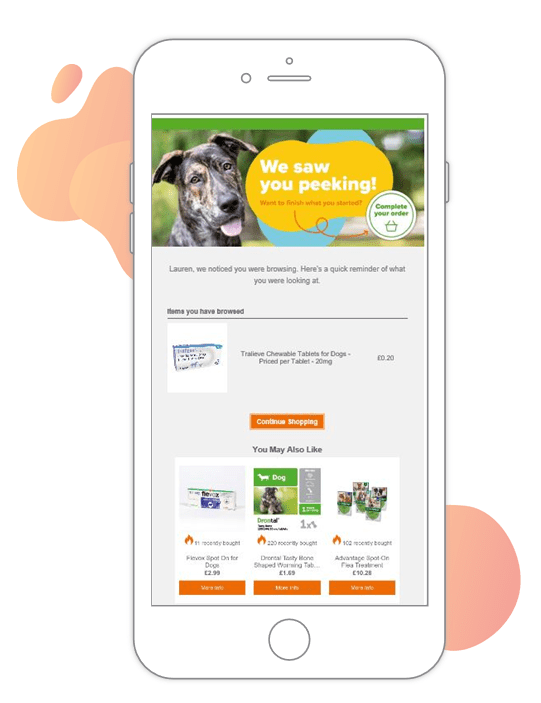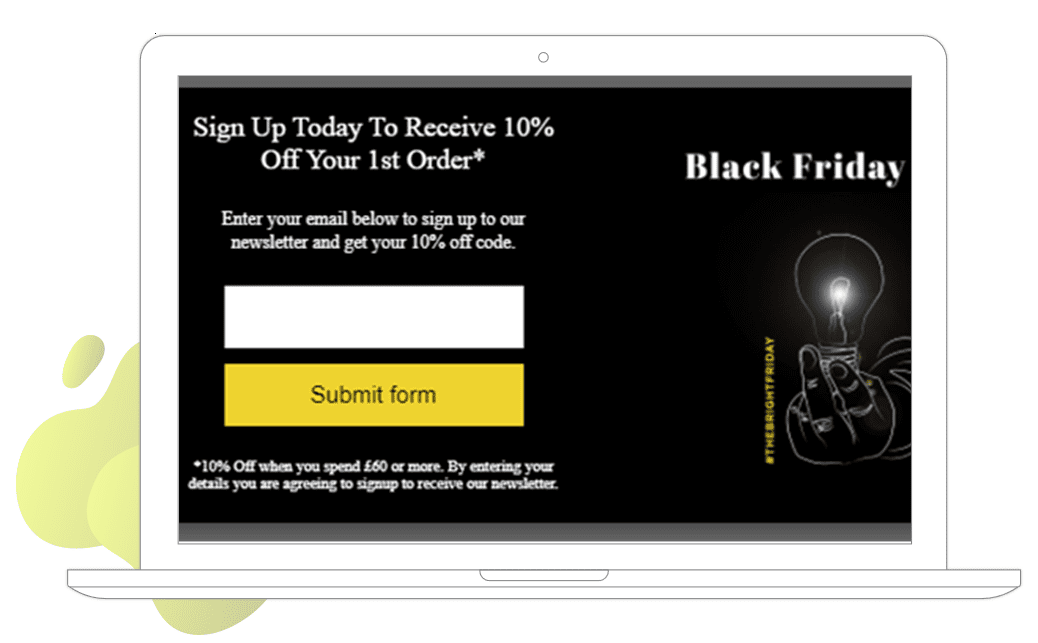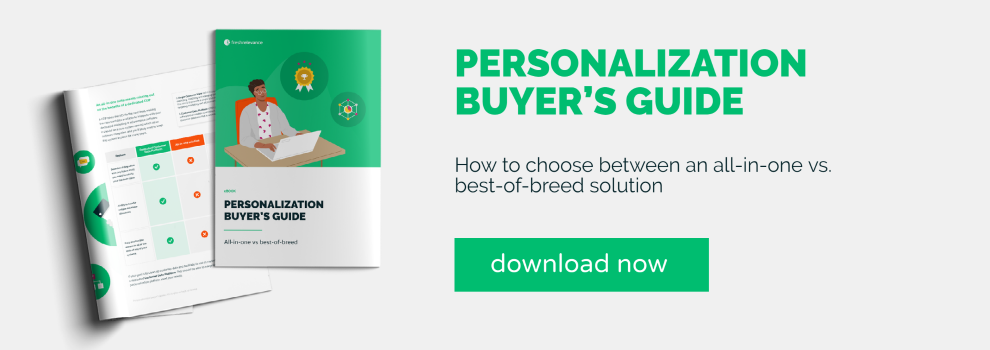According to Gartner, a personalization engine refers to software that applies context about individual users to target content, offers and other interactions across digital channels to support marketing, digital commerce and customer experience (CX).
Using insights based on unique user behavioral data, as well as behavioral data of similar individuals, personalization engines enable businesses to enhance the user’s experience with relevant, individualized interactions.
When it comes to eCommerce, personalization engines can provide a whole host of conversion-boosting functionality including personalized product recommendations, dynamic content and behavioral targeting. In fact, according to Gartner, digital commerce is a leading use case driving the purchase of personalization engines.
3 benefits of personalization engines
Here are three main benefits personalization engines can offer eCommerce businesses.
1) Increase your conversion rates
With personalization, eCommerce businesses can gain a better understanding of their customers, tailor the customer experience and lead shoppers towards making those all important purchases. In fact, the average Fresh Relevance client sees an 8% sales uplift with website personalization.
2) Increase your average order value (AOV)
Personalization tactics such as product recommendations are a proven way to increase AOV. One Fresh Relevance client enhances their cart abandonment emails by recommending products shoppers can add to their cart to meet the free delivery threshold, which has helped them achieve a 10% increase in AOV.
3) Reduce cart and browse abandonment
Research shows that 60% of carts are abandoned. But with personalization, all is not lost. Timely, personalized cart abandonment emails are a proven way to bring customers back to your site to complete their purchase. The average Fresh Relevance client sees a 21% sales uplift from recovery emails, which includes cart recovery and browse recovery.
Is a best-of-breed personalization engine right for you?
Personalization engines can be stand-alone solutions, but they can also be embedded in web content management, multichannel marketing hubs and digital commerce platforms.
Before committing to a software or even comparing vendors, you’ll need a clear idea of what you want to achieve.
Consider the tools you’ll need to carry out your marketing or eCommerce strategy now and in the future. Ask whether an all-in-one solution or your email service provider (ESP) can deliver on all of those requirements and whether you’re willing to compromise. But when it comes to best-in-class personalization, it’s worth considering a best-of-breed tool for the job.
Here are two examples of what you can achieve with a best-of-breed personalization engine.
1) Granular, behavior-based segmentation
Suppose you want to send different browse abandonment programs to your customer segments.
You can use segmentation based on a mixture of behavioral, customer and product data.
The system will need to collect:
- Behavioral data (such as the category and value of recently browsed products)
- Customer data (such as the shopper’s location and favorite brand)
- Product data (such as live pricing and availability)
You will need to be able to set rules to define which customers get which email program, based on this data.
The system will then need to identify shoppers who abandon a session, even if they aren’t logged in, then trigger the appropriate email program within 30 minutes based on the rules you assigned.
ESPs may struggle to identify browsers who aren’t logged in, and to perform real-time, behavioral-based segmentation.
Animed Direct uses Fresh Relevance to send dog-themed browse abandonment emails to browsers of their range of dog products. The company’s browse abandonment emails have driven revenue for automated emails up by 32%.

2) Real-time dynamic content
Marketing suites with a heavy email focus tend to be light on real-time content tools. For personalized images, sophisticated product recommendations, or location-based content, you’ll likely have to add a specialized solution.
Intelligent product recommendations are a part of most eCommerce marketing strategies. Check whether your vendor can draw from multiple data sources. For example, to mix crowd-sourced recommendations, personalized suggestions, and AI-based rules. And what about serving a different mix of product recommendations to different customer segments?
You’ll also need to consider the range of channels and the variety of content you want to personalize. For a seamless customer journey, the customized experience should flow through your website, emails and mobile apps. A marketing suite with an email focus may not be the best solution to personalize your website.
User identification is key to successful eCommerce site personalization. With the right software for onsite personalization, you can identify prospective customers early and throughout their customer journey, without them needing to login.
Initial identification can be through various methods such as a modal form that doubles as an email capture form. Once the person is identified, the software will start adding collected behavioral data about them. The customer behavior can be used to trigger personalized offers and guiding messages throughout the entire customer journey as the user moves between their inbox and your website.
LSE Retail uses Fresh Relevance to present new visitors to their Iconic Lights and Value Lights websites with a popover offering a discount on their first order when they sign up. The company has increased new visitor sign ups by 75% with their targeted popovers, enabling them to personalize the customer journey for more shoppers.

The benefits of personalization engines are clear. By implementing personalization tactics throughout the customer journey, you’ll be able to enhance the user’s experience with relevant, individualized interactions, which in turn will help increase your conversion rates and AOV and reduce cart and browse abandonment.
With personalization engines available in different forms, such as a stand-alone solution or embedded in digital commerce platforms, it’s important to consider your business goals and strategy before committing to a software.
Discover more about choosing a best-of-breed personalization solution or relying on an all-in-one marketing suite in our Personalization Buyer’s Guide.







